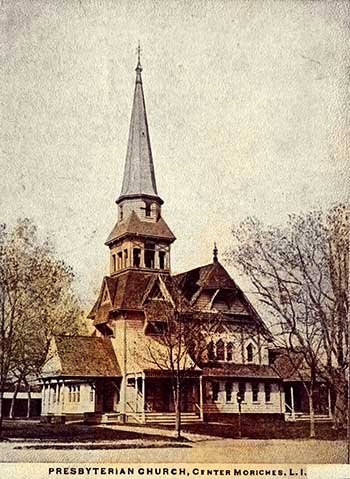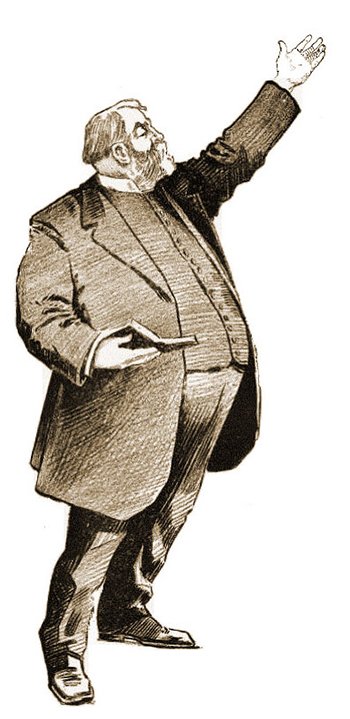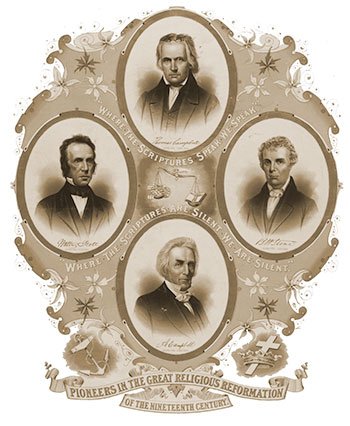The 1809 Long Island Revival: A Divine Awakening

Moriches Presbyterian Church, Long Island, New York – built 1809
The 1809 Long Island Revival was a significant religious awakening that swept through Suffolk County, Long Island, New York. This revival, primarily impacting Presbyterian churches, had a profound impact on the religious landscape of the area and serves as a notable example of the religious fervour that characterized the Second Great Awakening in the United States. While information about this specific revival is limited, this article aims to provide a comprehensive overview of the event by examining the historical context, key events, and lasting impact of the revival.
State of Religion on Long Island Prior to 1809
Prior to the 1809 revival, Long Island’s religious landscape was diverse, with various denominations vying for a foothold, mirroring the decline in religious adherence observed before the Great Awakening 1. This suggests a recurring pattern in religious history where periods of spiritual decline are often followed by periods of renewed religious fervour.
Long Island was home to a variety of religious communities, including Congregationalists, Episcopalians, and Reformed Dutch churches 2. This diverse religious landscape suggests a degree of religious tolerance and a willingness to explore different faiths.
While religious diversity flourished, Presbyterianism, though present, faced challenges in establishing itself as a dominant force. The Westminster Confession of Faith, a foundational document for Presbyterianism, was perceived by some as an English document with political undertones, making it less appealing to certain segments of the population 3.
Previous Revivals on Long Island
The 1809 Long Island Revival was not an isolated incident. Long Island had experienced previous periods of religious awakening, providing a historical context for the events of 1809. Notably, East Hampton, a town on Long Island, witnessed a series of revivals between 1741 and 1800 1. These revivals, though varying in intensity and impact, demonstrate a recurring pattern of spiritual renewal in the region.
Furthermore, a broader examination of revival history reveals a series of awakenings across various locations, including revivals in the 1700s, the First Great Awakening in the 1730s and 1740s, and the Second Great Awakening, which encompassed the 1809 Long Island Revival 4. This historical context underscores the cyclical nature of religious fervour and the recurring patterns of spiritual awakening observed throughout history.
Events that Sparked the 1809 Long Island Revival
While the specific events that ignited the 1809 Long Island Revival remain unclear, it is crucial to understand the broader context of religious revivals in America during this period. The late 18th and early 19th centuries witnessed a surge in religious enthusiasm known as the Second Great Awakening. This movement, characterized by emotional preaching and a focus on personal conversion, swept through various regions of the United States, leaving a lasting impact on American religious life 5.
The 1809 Long Island Revival can be seen as a localized manifestation of this broader religious awakening. It is likely that the revival was sparked by a combination of factors, including the efforts of local pastors, increased religious fervour in the surrounding areas, and a growing desire for spiritual renewal among the residents of Suffolk County. The increase in prayer meetings, as noted in historical accounts, also played a significant role in fostering a climate conducive to spiritual awakening 6.
Adding to the religious zeal of the time was the Haystack Prayer Meeting of 1806. This event, where a group of students at Williams College dedicated themselves to missionary work, sparked a wave of religious enthusiasm and contributed to the growing momentum of the Second Great Awakening 5. This event, though occurring a few years prior, likely had a ripple effect, influencing religious movements and revivals across the nation, including the 1809 Long Island Revival.
Major Leaders of the Revival
Unfortunately, the available material does not provide specific information about the major leaders of the 1809 Long Island Revival. However, it is important to note that religious revivals often gain momentum through the efforts of charismatic preachers and dedicated religious leaders. These individuals play a crucial role in inspiring and guiding those seeking spiritual renewal.
In the context of Long Island’s religious history, figures like Reverend Samuel Buell, a prominent evangelical preacher during the Great Awakening, played a significant role in shaping religious discourse and promoting spiritual revival 1. While his direct involvement in the 1809 revival is unclear, his influence on the religious landscape of Long Island cannot be ignored.
Churches Involved in the Revival
The 1809 Long Island Revival primarily impacted Presbyterian churches in Suffolk County. One notable example is the Presbyterian Church of Moriches, which erected its first house of worship, “The Union Meeting House,” in 1809. This building served as a shared space for different denominations struggling for existence at the time 7.
The revival likely involved other Presbyterian churches in the area, although specific details are scarce. It is important to remember that religious revivals often transcend denominational boundaries, impacting individuals and communities across various faiths.
Personal Testimonies of Participants
While specific personal testimonies from the 1809 revival are unavailable, it is plausible that participants experienced similar emotions and transformations as those documented in other revivals, such as the Great Awakening. These experiences often involve a heightened awareness of sin, a deep sense of conviction, and a newfound commitment to devotion to Jesus 1.
Prayers Used During the Revival
The research material does not provide specific information about the prayers used during the 1809 Long Island Revival. However, prayer played a central role in religious revivals of this era. Prayer meetings and communal prayer were common practices, providing opportunities for individuals to express their faith, seek guidance, and connect with the divine.
While the exact prayers used in the 1809 revival remain unknown, it is likely that they reflected the common themes of repentance, forgiveness, and spiritual renewal prevalent in religious discourse during the Second Great Awakening.
Immediate and Lasting Results of the Revival
The 1809 Long Island Revival had a significant impact on the religious landscape of Suffolk County. One immediate result was a notable increase in church membership. According to historical accounts, over 300 people were added to the church during the year of the revival 6. This suggests a widespread embrace of the Christian faith and a renewed commitment to church and a godly lifestyle.
The revival also had a broader impact on the community. There was a noticeable reduction in vice and immorality, along with increased Sunday church attendance and observance of the Sabbath 6. This suggests that the revival fostered a greater sense of moral responsibility and a renewed commitment to Christian values.
Furthermore, the revival’s impact extended across different age groups, notably affecting a significant number of elderly individuals (80-90 years old) 6. This suggests the revival’s power to evoke late-life conversions and its reach across different generations.
The revival also had a significant impact on African Americans and those of African descent 6. This highlights the inclusive nature of the revival and its ability to transcend racial boundaries, bringing together diverse communities under a shared religious experience.
The long-term impact of the 1809 Long Island Revival is more challenging to assess. However, it is likely that the revival contributed to the strengthening of religious institutions and a deepening of religious faith within the community. Religious revivals often serve as catalysts for spiritual growth and social change, leaving a lasting legacy on the communities they touch.
Comparison with the Second Great Awakening
The 1809 Long Island Revival shares several similarities with the broader Second Great Awakening. Both movements emphasized emotional preaching, personal conversion, and a renewed commitment to following Christ. Both also occurred during a period of social and political change, suggesting a connection between religious fervour and broader societal transformations.
However, there are also some notable differences. The Second Great Awakening was a much larger and more geographically widespread movement, impacting various regions of the United States. The 1809 Long Island Revival, while significant, was a more localized event, primarily impacting Presbyterian churches in Suffolk County.
Chronological Timeline of the Revival
Unfortunately, the research material does not provide a detailed chronological timeline of the 1809 Long Island Revival. However, we can construct a general timeline based on the available information:
- Prior to 1809: Long Island’s religious landscape is diverse, with various denominations present. Presbyterianism faces challenges in establishing itself as a dominant force.
- 1809: The revival begins, primarily impacting Presbyterian churches in Suffolk County.
- During 1809: Increased religious enthusiasm, prayer meetings, and conversions are observed. Over 300 people are added to the church.
- Immediate aftermath: A noticeable reduction in vice and immorality, along with increased Sunday church attendance, is reported.
- Long-term impact: The revival likely contributes to the strengthening of religious institutions and a deepening of religious faith within the community.
Conclusion
The 1809 Long Island Revival stands as a significant event in the religious history of Long Island, reflecting the broader religious zeal that characterized the Second Great Awakening in the United States. This revival, though localized in its geographic scope, had a profound impact on the Presbyterian churches of Suffolk County and the surrounding community.
The revival’s emphasis on emotional preaching, personal conversion, and communal prayer contributed to a surge in religious enthusiasm and a renewed commitment to religious practice. The increase in church membership, the reduction in vice and immorality, and the revival’s reach across different age groups and racial boundaries highlight its transformative power and its ability to unite diverse communities under a shared religious experience.
The 1809 Long Island Revival serves as a testament to the enduring power of Christian awakenings in shaping American religious history and underscores the profound influence of faith in transforming individuals and communities.
Works cited
- “A remarkable revival of religion” – Revealing Long Island History, accessed on December 15, 2024, https://longisland.brooklynhistory.org/stories/a-remarkable-revival-of-religion/
- Religions on Long Island Collection, 1788 – Hofstra University, accessed on December 15, 2024, https://www.hofstra.edu/pdf/library/libspc_lisi_religionsonli_fa.pdf
- Presbyterianism on Long Island, accessed on December 15, 2024, https://caleb-cangelosi-437x.squarespace.com/s/Whitaker-Epher-Presbyterianism-on-Long-Island.pdf
- 693 Accounts of Revival – BEAUTIFUL FEET, accessed on December 15, 2024, https://romans1015.com/accounts-of-revival/
- Missionary Revival Sweeping the East Coast – Punahou Bulletin, accessed on December 15, 2024, https://bulletin.punahou.edu/missionary-revival-sweeping-the-east-coast/
- 1809 Long-Island Revival – BEAUTIFUL FEET, accessed on December 15, 2024, https://romans1015.com/long-island/
- EARLY CHURCHES ON LONG ISLAND, accessed on December 15, 2024, http://www.longislandgenealogy.com/EarlyChurch.html
- Some History of Holy Spirit Revival in America by David Andrade – Identity Network, accessed on December 15, 2024, https://www.identitynetwork.net/apps/articles/default.asp?articleid=82348&columnid=2093



